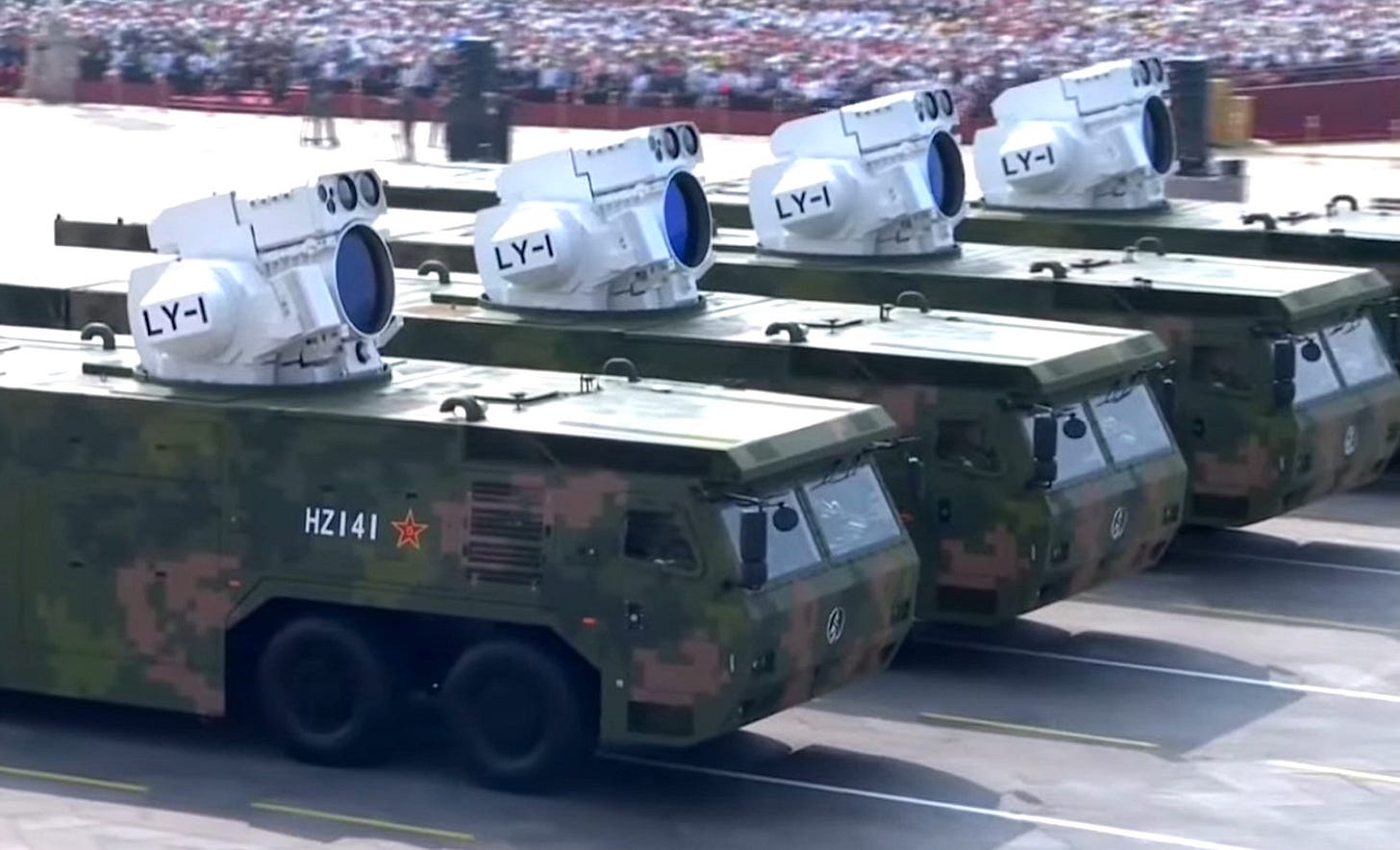The Laser Weapon Inflection Point
Are we entering a new phase of the global directed energy arms race?

The Laser Wars are heating up.
On September 3, China’s People’s Liberation Army trotted out a slew of new weapons during Beijing’s massive military parade marking the 80th anniversary of Japan’s defeat at the end of World War II, includ…
Keep reading with a 7-day free trial
Subscribe to Laser Wars to keep reading this post and get 7 days of free access to the full post archives.


